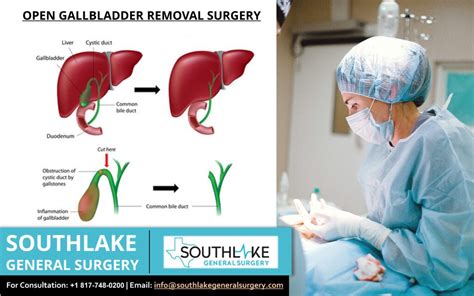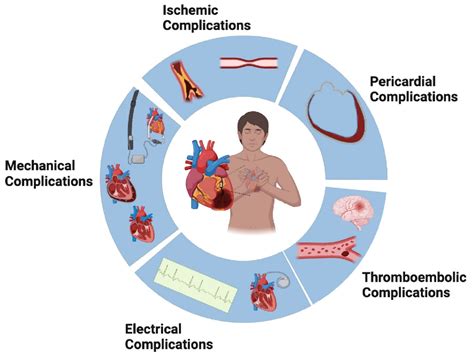Intro
Recover smoothly from gall surgery with our comprehensive guide, covering post-op care, dietary changes, and managing symptoms, to ensure a speedy and healthy gallbladder removal recovery process.
The gallbladder is a vital organ that plays a significant role in the digestive system, storing bile from the liver and releasing it into the small intestine to aid in fat digestion. However, when the gallbladder becomes diseased or inflamed, surgical removal may be necessary. Gallbladder surgery, also known as cholecystectomy, is a common procedure that can be performed using open or laparoscopic techniques. Recovery from gallbladder surgery can vary depending on the individual and the type of surgery performed. In this article, we will delve into the world of gall surgery recovery, exploring the importance of post-operative care, the benefits of a healthy lifestyle, and the steps to take for a smooth and successful recovery.
Recovery from gallbladder surgery is a critical period that requires careful attention to ensure a smooth and complication-free healing process. During this time, the body is adjusting to the loss of the gallbladder, and the digestive system is adapting to the new dynamics of bile production and release. A well-planned recovery strategy can help minimize discomfort, reduce the risk of complications, and promote a speedy return to normal activities. Whether you're undergoing open or laparoscopic surgery, understanding the recovery process is essential for a successful outcome.
The road to recovery from gallbladder surgery begins immediately after the procedure, with the initial focus on pain management, wound care, and monitoring for potential complications. As the body begins to heal, it's essential to follow a balanced diet, stay hydrated, and engage in gentle exercises to promote digestion and prevent constipation. A healthy lifestyle, including a nutritious diet and regular physical activity, can help support the recovery process, reduce the risk of future health problems, and improve overall well-being. In the following sections, we will explore the key aspects of gall surgery recovery, providing valuable insights and practical tips to help you navigate this critical period.
Gallbladder Surgery Overview

Types of Gallbladder Surgery
There are two primary types of gallbladder surgery: open and laparoscopic. Open cholecystectomy is typically performed for more complex cases, such as severe inflammation or scarring, while laparoscopic cholecystectomy is often preferred for its minimally invasive approach and faster recovery time. In some cases, a combination of both techniques may be used, known as a hybrid approach. Understanding the different types of gallbladder surgery can help you make informed decisions about your care and recovery.Post-Operative Care

Pain Management
Pain management is a crucial aspect of post-operative care, as it can help reduce discomfort, promote relaxation, and prevent complications. Patients may experience pain, tenderness, or numbness at the surgical site, which can be managed with prescription pain medications, such as opioids or non-steroidal anti-inflammatory drugs (NSAIDs). In some cases, alternative pain management techniques, such as acupuncture or massage therapy, may be used to complement traditional pain medications. It's essential to discuss pain management options with your surgeon or healthcare provider to determine the best approach for your individual needs.Diet and Nutrition

Food Choices
Making informed food choices is critical for a successful recovery from gallbladder surgery. Patients should focus on consuming low-fat, high-fiber foods, such as lean meats, fish, whole grains, and a variety of fruits and vegetables. Foods that are high in fat, sugar, or salt should be avoided, as they can irritate the digestive system and worsen symptoms. Additionally, patients should stay hydrated by drinking plenty of water, clear broths, or other low-calorie fluids. A well-planned diet can help reduce the risk of complications, promote digestion, and support overall health and well-being.Exercise and Physical Activity

Benefits of Exercise
Regular exercise offers numerous benefits for patients recovering from gallbladder surgery, including improved digestion, reduced risk of complications, and enhanced overall health. Exercise can help stimulate the digestive system, preventing constipation and promoting regular bowel movements. Additionally, exercise can help reduce stress and anxiety, promoting relaxation and improving mood. Patients should discuss their exercise plans with their surgeon or healthcare provider to determine the best approach for their individual needs and abilities.Complications and Risks

Risk Factors
Certain risk factors can increase the likelihood of complications or adverse reactions during or after gallbladder surgery. Patients with pre-existing medical conditions, such as diabetes or heart disease, may be at higher risk for complications. Additionally, patients who smoke or have a history of obesity may be at increased risk for wound infections or respiratory problems. It's essential to discuss any risk factors with your surgeon or healthcare provider to determine the best approach for your individual needs and medical condition.Long-Term Outlook

Follow-Up Care
Follow-up care is critical for patients who have undergone gallbladder surgery, ensuring that the body is healing properly and addressing any concerns or symptoms. Patients should attend scheduled follow-up appointments with their surgeon or healthcare provider, where they will be monitored for potential complications and provided with guidance on post-operative care. Additionally, patients should report any symptoms or concerns to their healthcare provider, such as pain, nausea, or changes in bowel movements.What are the benefits of gallbladder surgery?
+Gallbladder surgery can provide significant relief from symptoms such as abdominal pain, nausea, and vomiting, improving overall quality of life.
What are the risks and complications of gallbladder surgery?
+Gallbladder surgery carries potential risks and complications, including infection, bleeding, and adverse reactions to anesthesia, which can be managed with proper post-operative care and follow-up appointments.
How long does it take to recover from gallbladder surgery?
+Recovery time from gallbladder surgery can vary depending on the individual and the type of surgery performed, but most patients can expect to return to normal activities within 1-2 weeks.
In conclusion, recovery from gallbladder surgery requires careful attention to post-operative care, diet, exercise, and follow-up appointments. By understanding the benefits, risks, and complications of gallbladder surgery, patients can make informed decisions about their care and take proactive steps to promote a smooth and successful recovery. If you have any questions or concerns about gallbladder surgery or recovery, we invite you to share your thoughts and experiences in the comments below. Additionally, feel free to share this article with others who may be going through a similar experience, and don't hesitate to reach out to a healthcare professional for personalized guidance and support.
